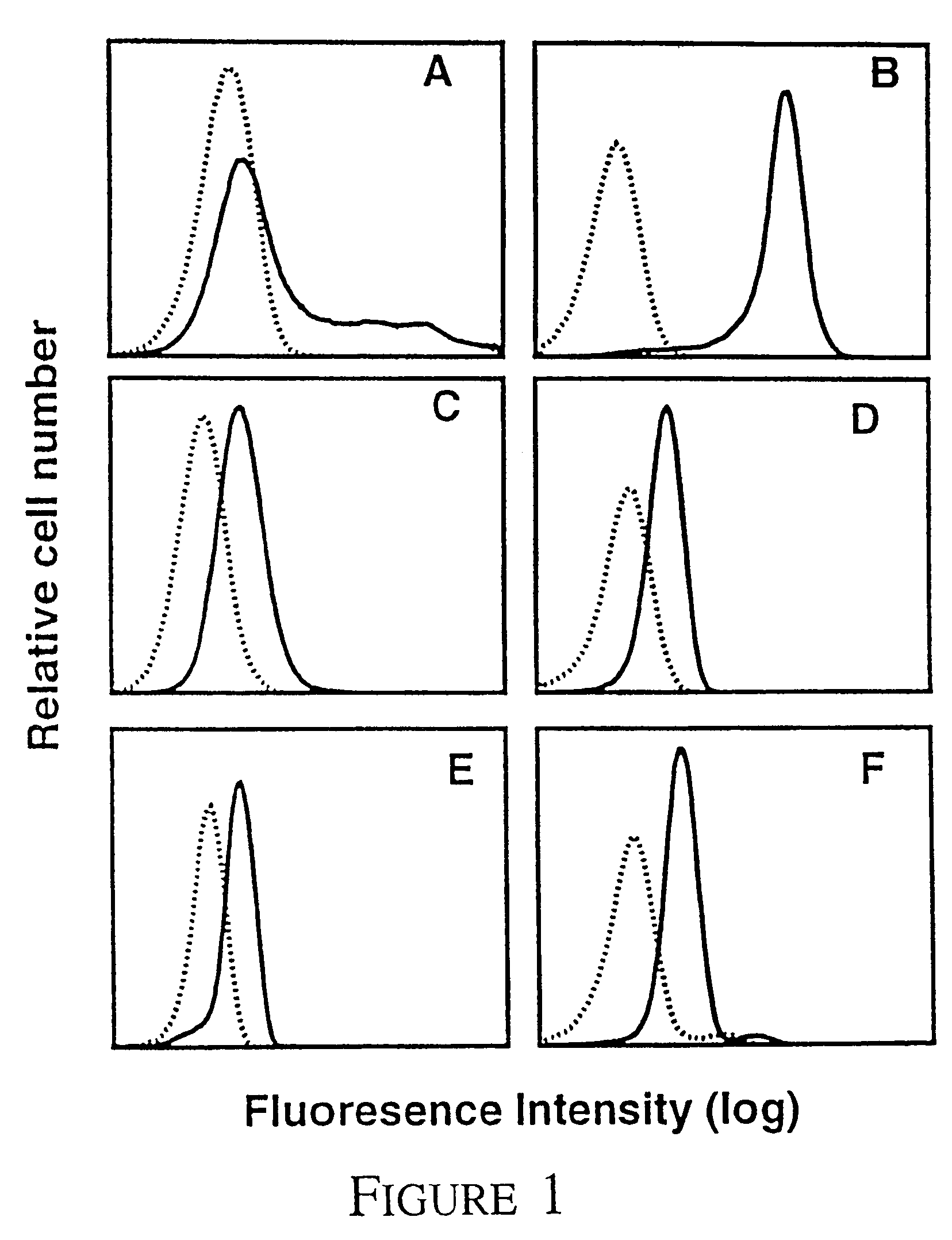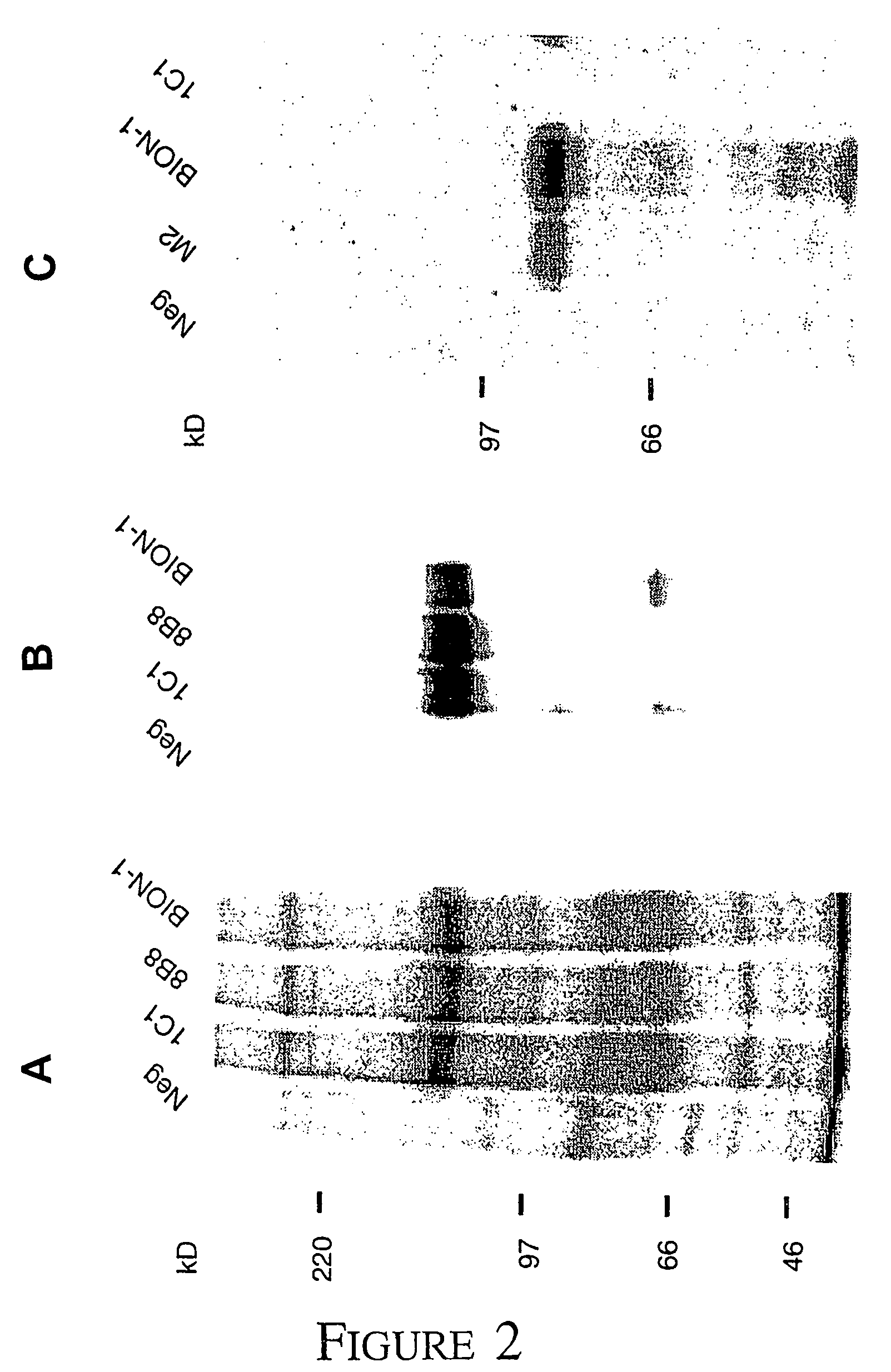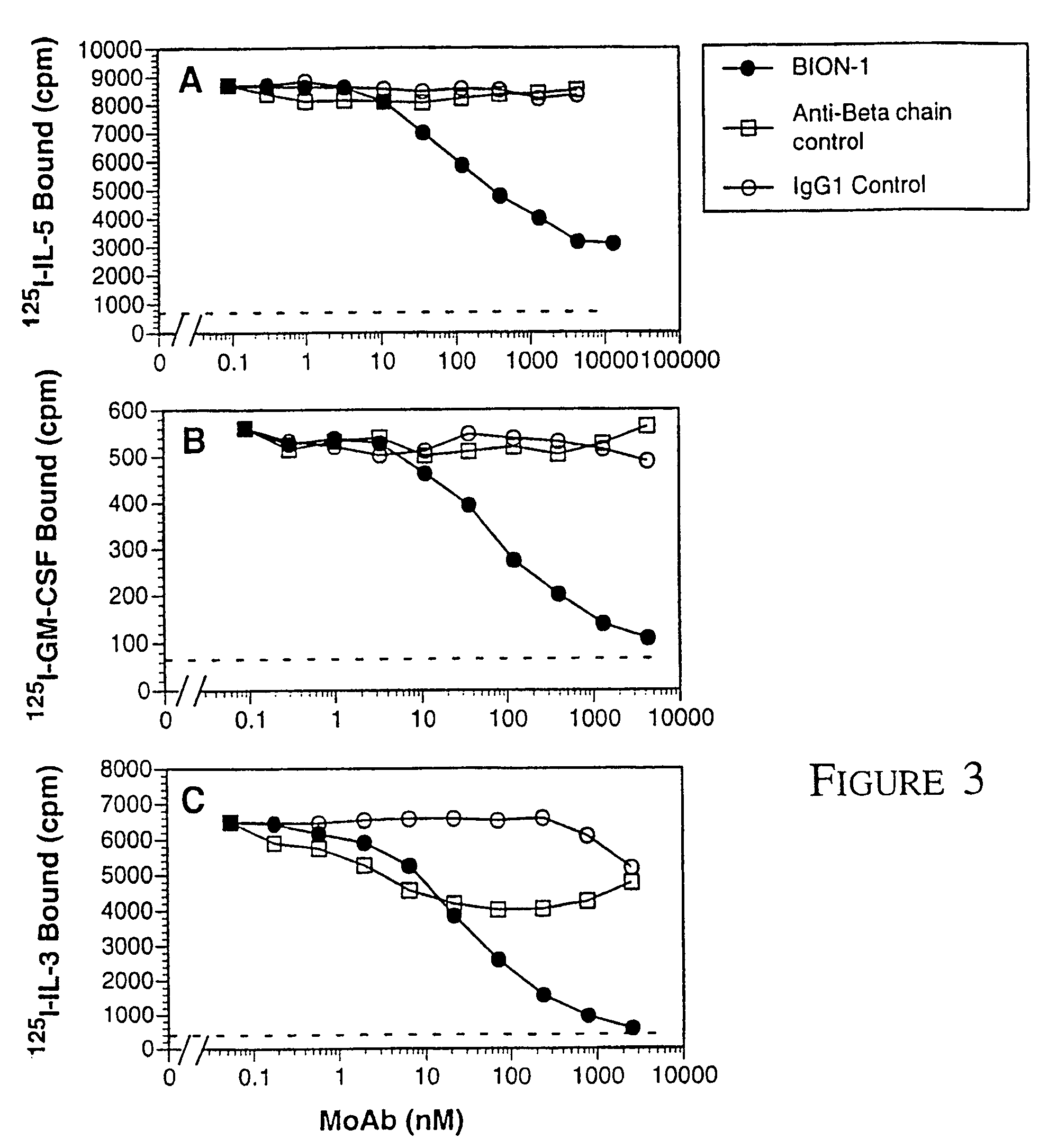Method of modulating leukemic cell and eosinphil activity with monoclonal antibodies
a technology of eosinophile activity and leukaemic cell, which is applied in the field of modulating leukaemic cell and eosinophile activity with monoclonal antibodies, can solve the problems of affecting the action of more than one ligand, and achieve the effects of blocking the production and activation, blocking the growth of leukaemic cell lines, and blocking high affinity binding
- Summary
- Abstract
- Description
- Claims
- Application Information
AI Technical Summary
Benefits of technology
Problems solved by technology
Method used
Image
Examples
Embodiment Construction
Materials and Methods
[0053]ΔQP cDNA: To express domain 4 of βc on the cell surface we cloned the activated βc mutant, hβcΔQP, with an extracellular deletion removing domains 1 to 3 (D'Andrea et al 1996), into the eukaryotic expression vector pcDNA3 (Invitrogen).
[0054]Cytokines and cell lines: Recombinant human IL-3 and GM-CSF were produced in E. coli as described (Barry et al 1994, Hercus et al 1994b). Recombinant human IL-5 was purified from E. coli by Bresatec (Adelaide, South Australia). Recombinant EPO was purchased from Johnson & Johnson (New Jersey). TNFα was a gift from Dr. J. Gamble in the Hanson Centre for Cancer Research. COS cells were transfected with receptor cDNA as described previously (Woodcock et al 1994). CHOβc and CHOΔQP cells stably expressing either full length βc or domain 4 respectively were generated by electroporation (Hercus et al, 1994a). TF1.8 cells were a gift from Dr J. Tavernier from University of Gent, Belgium. MO7e cells, a human megakaryoblastic cel...
PUM
| Property | Measurement | Unit |
|---|---|---|
| concentrations | aaaaa | aaaaa |
| concentrations | aaaaa | aaaaa |
| concentrations | aaaaa | aaaaa |
Abstract
Description
Claims
Application Information
 Login to View More
Login to View More - R&D
- Intellectual Property
- Life Sciences
- Materials
- Tech Scout
- Unparalleled Data Quality
- Higher Quality Content
- 60% Fewer Hallucinations
Browse by: Latest US Patents, China's latest patents, Technical Efficacy Thesaurus, Application Domain, Technology Topic, Popular Technical Reports.
© 2025 PatSnap. All rights reserved.Legal|Privacy policy|Modern Slavery Act Transparency Statement|Sitemap|About US| Contact US: help@patsnap.com



